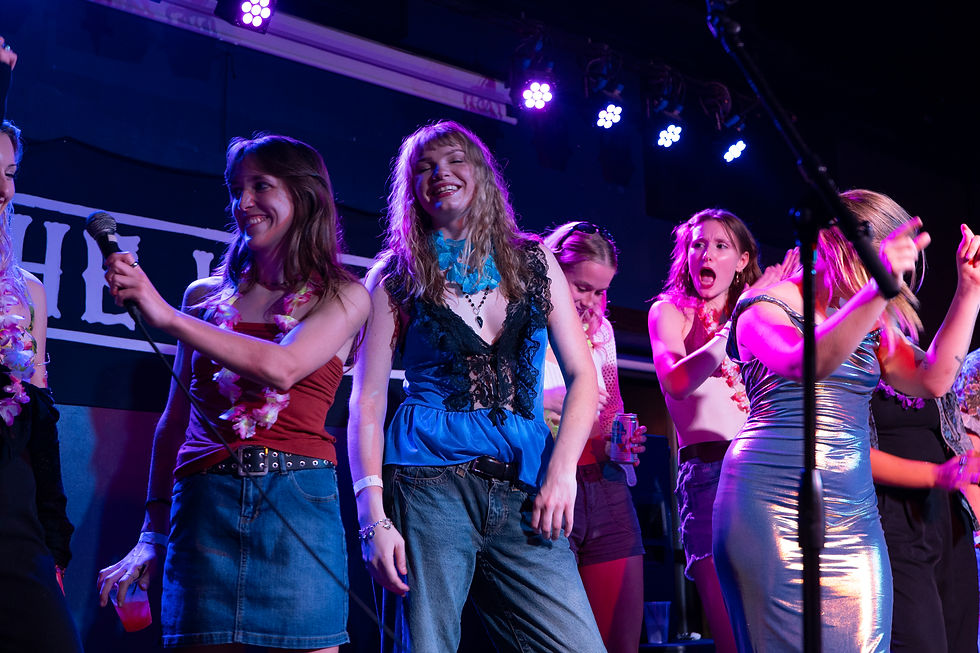How COVID-19 Pushed Fashion Into a New Age
- Variant Magazine
- Jan 18, 2021
- 3 min read
Updated: Oct 17, 2023
By Julie Meyers, Writer
Since the onset of COVID-19, the fashion world, an industry built on travel, collaboration, audience and spectacle, has been rewiring its century-old system to fit the current ways of life. The modern fashion show dates back to the 1860s when English fashion designer Charles Worth used live models instead of mannequins to show his designs. In the early 1900s, “fashion parades” began spreading around major cities. In 2020, runway shows and fashion week look much different than what Worth envisioned over a hundred years ago.
According to Vogue magazine, this year London Fashion Week featured digital lookbooks as well as playlists created by designers. Designer Anifa Mvuemba, the founder of the women’s fashion line Hanifa, debuted a virtual fashion show containing 3D renderings of her designs. Her breakthrough fashion week offered a new look at the potential future of virtual fashion shows regarding 3D imaging, CGI and body mapping.


Photos by Kate Bender
Patrick McDowell, a sustainable fashion designer, used crystals and Taroni pink silk to create a Vatican City in the clouds in a queer-friendly Catholic church for Helsinki Fashion Week. Damara Ingles used an immersive installation that allowed attendees to fly around the virtual runway. Each of these shows was entirely digital, offering a glimpse into a fashion week for all. The Scandinavian retailer Carlings launched a new idea to bridge the gap between viewers and the show by allowing viewers to pre-order garments or claim a limited edition garment, which could be dressed on the viewer in the virtual space. The company hoped the idea might eventually transpire into virtual reality headsets.
There was also a simpler approach to virtual fashion shows. Fashion Unites, a YouTube-streamed edition of French fashion editor Carine Roitfeld’s CR Runway, was run entirely from home. Designers from Balmain, Valentino and Louis Vuitton made appearances, while the models cat-walked right in their own homes with the direction of their hairstylists, makeup artists and movement coaches.
Behind-the-scenes footage showed experts giving their tutorials virtually. While the approach was applauded as “the first of its kind,” it did pose drawbacks. For example, viewers almost seemed more interested in the homes of celebrities than the clothes themselves.


Photos by Kate Bender
After watching the show, Molly Hammond, a senior at The Ohio State University and owner of Good & Grateful Clothing Company, agrees that although it was a clever idea, it just barely missed the mark.
“I understand what they were trying to do as far as bringing an appeal for fashion to the every-day person, as well as be sure to get their new clothing line out for the upcoming season on time, but the background was distracting to the every-day person who may not be there for the clothes in the first place,” she says. “A better approach may have been using a green screen to transform the environment so the background wouldn’t be a distraction while still allowing models to stay home and stay safe. Overall, fashion is fully felt best in person.”
However, Hannah Codner, a college student studying Health Sciences, really enjoyed the virtual aspect of shows. “Although I’m not focusing on it in college, I have always enjoyed looking into fashion and keeping up with it on my personal time,” Codner says. “It was really cool to see the models in their own homes instead of in a more professional setting like usual. It made the clothes feel less formal and fashion more attainable for the average person. Although, I would have to agree that seeing celebrity homes might have been a little bit distracting.”


Photos by Kate Bender
Some argue that the virtual experience of a fashion show will never measure up to the physical one. By the end of a virtual fashion show, viewers and artists have felt that the performance felt flat in comparison to in-person shows. Designers often run into road bumps as they attempt to transform the experience into a show that’s just as compelling and poetic virtually as it would be in person. The previous fashion show format has stuck for years because fashion wants to be seen in real life on a runway.
In the end, Paris, London, and Milan Fashion Weeks all decided to return to physical shows back in September, while New York will remain mostly online. However, things can change given new circumstances. In tight timeframes, it became difficult for creators to meet expectations and deadlines that the pandemic presents. There is a split opinion on where the direction of fashion shows will go from here, whether that’s embracing new formats and creative techniques or sticking to what is already familiar.

Photo by Kate Bender



Comments